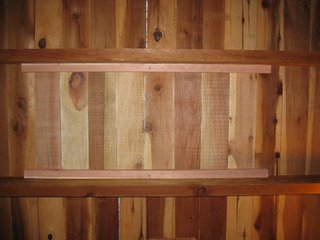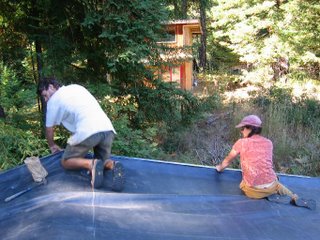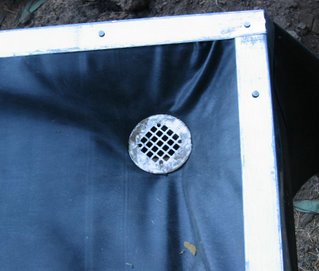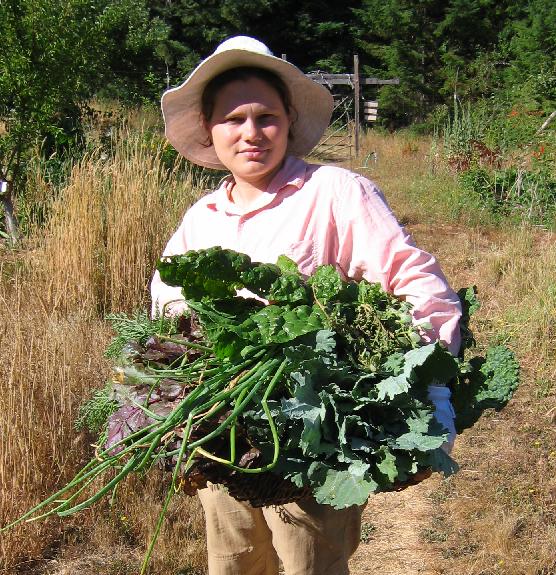Fixing the El Nido Roof













We finished this quite a while ago, before it rained, except for a last bit of dirt to go back on, but I didn't get around to writing about it then.
El Nido was one of the first houses build here and they were used a liner to go under the dirt on the living roof that was not really appropriate for that use. It leaked last winter and they decided to put redo it with a new liner, and take out some of the skylights. Originally the house had 3 skylights, and skylights are notorious for causing roofs to leak. The one in the bedroom which was really needed was replaced, the other two were taking out and replaced with wood, even from inside looking up it is hard to see where they used to be.
First the dirt was taken off and piled up behind the house to be put back after we were done. Then the skylights were taken out. Then, since the old liner was stuck on old used carpets were laid on top of the old liner. The carpets had been stored outside so they were swept off well since any little sharp bits could poke a hole in the new liner and create a leak. After that the new pond liner was put in place. It is really heavy and it took quite a few of us to get it on the roof and unroll it. That roof has thick sheets of insulation on top of it where the house is but not over the eves, so the roof is not smooth, which made it hard to get the liner to fit well. We didn't want to stretch too tight anywhere since that seems more vulnerable to punctures and it is hard to get to stay where you put it. The liner is like a tire inner tube, it reminded me a lot of new bicycle inner tubes in texture and smell. Not a terribly natural material, but not likely to leak. Once people were satisfied with how the liner lay, we attached it by putting flashing around the edges. And the skylight and hole for the stove pipe had to be cut and very carefully sealed. Then we cut the excess liner off the edge of the roof, and put the drains in, the roof drains from the corners but inside the edge of the roof, not in gutters around it.
Once the liner was on we put some rock around the bottom of it to help with drainage. Then it was time to lift all that dirt back onto the roof. Luckily we had a lot of help with this. A few people would work on the ground shoveling dirt into 5 gallon buckets, then someone would lift them up to someone on the roof who would heave them up and take them to where they needed to be dumped. There were usually two people on the roof too so we didn't get behind. I was one of the lifters and dumpers on the roof. Living roofs are normally not very steep since the dirt can roll off if they are so being on it was easy, and this one was pretty low to the ground too so lifting buckets up was not a huge problem.
It was all somewhat more complicated than I make it sound, especially making the skylight and stove pipe not leak, but it seems to be working, no leaks in the last few rains.


0 Comments:
Post a Comment
<< Home